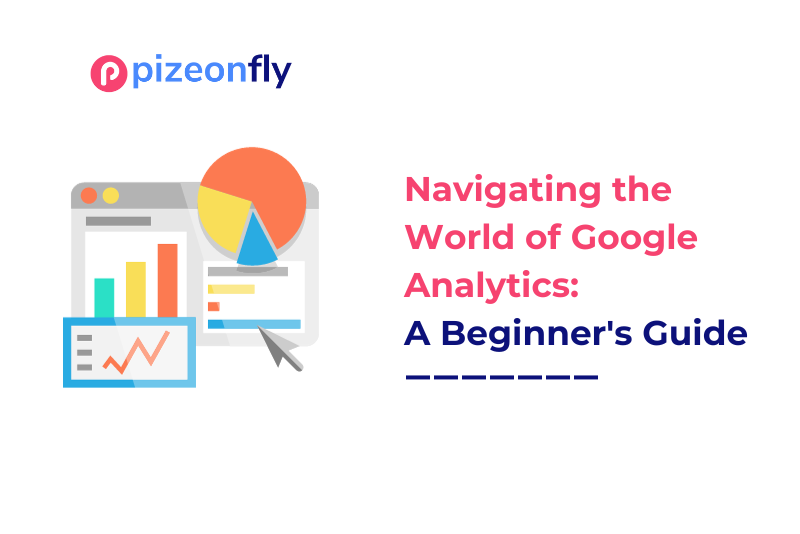
Mastering Facebook Advertising: Proven Tips for Success
September 7, 2023Introduction
In today’s digital age, data is the lifeblood of successful online businesses. To thrive in the highly competitive online landscape, understanding your website’s performance and user behavior is crucial. This is where Google Analytics comes into play. Whether you’re a small business owner, a blogger, or a marketing professional, mastering the art of Google Analytics can provide invaluable insights and drive your online success. In this beginner’s guide, we’ll navigate through the world of Google Analytics and empower you to harness its potential for optimizing your online presence.
Chapter 1: What is Google Analytics?
Before diving into the intricacies of Google Analytics, let’s start with the basics. Google Analytics is a powerful web analytics tool offered by Google that helps you track and analyze website traffic and user interactions. It provides a comprehensive overview of how visitors interact with your website, enabling you to make data-driven decisions to improve user experience, engagement, and conversion rates.
Chapter 2: Setting Up Google Analytics
To begin your journey with Google Analytics, you need to set up an account. Here’s a step-by-step guide to getting started:
- Create a Google Analytics Account: If you don’t have one already, sign in to your Google account and go to the Google Analytics website. Follow the prompts to create an account for your website.
- Set Up a Property: A property in Google Analytics represents your website. After creating an account, you’ll need to set up a property by providing your website’s URL and other relevant information.
- Get Your Tracking Code: Google Analytics uses a tracking code that you need to add to your website’s pages. This code collects data about user interactions and sends it to your Google Analytics account.
- Install the Tracking Code: Depending on your website platform (e.g., WordPress, Shopify, or custom-built), you’ll need to add the tracking code to your site. You can do this by adding it to the HTML of your web pages or by using plugins or integrations.
Chapter 3: Understanding Google Analytics Reports
Once your tracking code is set up and collecting data, you can start exploring the various reports and insights available in Google Analytics. Some key reports to focus on include:
- Audience Overview: This report provides information about your website’s visitors, including demographics, location, and device usage.
- Acquisition: Learn how users find your website, whether through search engines, social media, referrals, or direct traffic.
- Behavior: Understand how visitors interact with your site’s content, including which pages are most popular and where users drop off.
- Conversions: Set up goals and track how well your website is converting visitors into customers or achieving other desired actions.
Chapter 4: Setting Goals and Conversions
One of the most powerful features of Google Analytics is its ability to track specific goals and conversions on your website. Whether it’s making a purchase, signing up for a newsletter, or completing a contact form, setting up goals allows you to measure your website’s success. In this chapter, we’ll walk you through the process of creating and tracking goals and conversions effectively.
Chapter 5: Analyzing User Behavior
Understanding how users navigate your website is key to improving user experience and increasing engagement. Google Analytics provides valuable insights into user behavior through features like:
- Pageviews: Discover which pages are the most visited and how long users spend on them.
- Bounce Rate: Learn the percentage of visitors who leave your site after viewing just one page.
- Site Speed: Analyze page load times and identify areas for improvement.
- Event Tracking: Track specific user interactions, such as clicks on buttons, video views, or downloads.
Chapter 6: Advanced Google Analytics Features
Google Analytics offers advanced features for those looking to dive deeper into their data:
- E-commerce Tracking: If you run an online store, you can track sales, revenue, and product performance.
- Custom Dimensions and Metrics: Create custom parameters to collect data unique to your website.
- Segments: Isolate specific subsets of your data to gain more targeted insights.
Chapter 7: Troubleshooting and Tips
No tool is without its challenges. In this chapter, we’ll discuss common issues users face with Google Analytics and provide tips for troubleshooting. From tracking code problems to data discrepancies, we’ll help you navigate these obstacles.
Chapter 8: Integrations and Third-Party Tools
Google Analytics can be integrated with various other tools and platforms to enhance its functionality. We’ll explore some of the most popular integrations and how they can benefit your website analytics efforts.
Chapter 9: Staying Informed and Up-to-Date
The digital landscape is constantly evolving, and so is Google Analytics. In this chapter, we’ll provide resources and tips to help you stay informed about the latest updates, best practices, and industry trends.
Chapter 10: Leveraging Google Analytics for SEO
Search Engine Optimization (SEO) is a critical aspect of online success. Google Analytics can be a powerful ally in your SEO efforts. In this chapter, we’ll explore how to use Google Analytics to improve your website’s visibility in search engines:
- Keyword Analysis: Discover which keywords are driving organic traffic to your site. Use the “Queries” report in Google Analytics to identify high-performing keywords and optimize your content accordingly.
- Referral Traffic: Analyze which external websites are referring traffic to your site. This information can help you identify valuable backlink opportunities and partnerships.
- Content Insights: Determine which pages and blog posts are the most popular among your organic visitors. Optimize and expand upon these pages to boost your SEO rankings.
- Site Search: If your website has a search feature, track what users are searching for. This data can reveal content gaps and help you create more targeted content.
Chapter 11: Mobile Optimization with Google Analytics
With the increasing use of mobile devices, it’s essential to ensure that your website is mobile-friendly. Google Analytics provides insights into your website’s mobile performance. In this chapter, we’ll discuss:
- Mobile Traffic Analysis: Understand the percentage of visitors accessing your site through mobile devices. Identify opportunities to improve the mobile user experience.
- Mobile Load Times: Analyze the speed at which your site loads on mobile devices. Slow load times can negatively impact your SEO and user experience.
- Mobile Conversion Rates: Evaluate how well your site converts mobile visitors into customers. Optimize the mobile checkout process and forms for better conversions.
Chapter 12: Google Analytics and Social Media
Social media is a significant source of website traffic for many businesses. Google Analytics can help you track the effectiveness of your social media marketing efforts. In this chapter, we’ll explore:
- Social Media Referrals: Identify which social media platforms are driving the most traffic to your website. Focus your efforts on the most successful platforms.
- Conversions from Social: Track how well your social media visitors are converting into customers or leads. Adjust your social media strategy based on conversion data.
- Social Media Campaign Tracking: Use UTM parameters to track the performance of specific social media campaigns. This allows you to measure the ROI of your social media efforts.
Chapter 13: Data Privacy and Compliance
As data privacy regulations become more stringent, it’s essential to ensure that your use of Google Analytics aligns with these regulations. In this chapter, we’ll cover:
- GDPR Compliance: Understand how the General Data Protection Regulation (GDPR) affects your use of Google Analytics. Implement cookie consent banners and data retention policies.
- Data Anonymization: Learn how to anonymize user data in Google Analytics to protect user privacy while still gathering valuable insights.
- User Opt-Out Options: Provide users with the ability to opt out of Google Analytics tracking if they wish to do so.
Chapter 14: Google Analytics Resources and Training
To become a true master of Google Analytics, ongoing education and training are essential. In this chapter, we’ll provide a list of valuable resources, including:
- Google Analytics Academy: Explore free online courses and certifications offered by Google to deepen your knowledge.
- Blogs and Forums: Follow industry experts and participate in forums where you can ask questions and learn from others.
- Books and Ebooks: Invest in books and ebooks dedicated to Google Analytics best practices and advanced techniques.
Conclusion
Congratulations! You’ve now completed our comprehensive beginner’s guide to Google Analytics. You’ve gained the knowledge and skills needed to navigate the world of web analytics effectively. Remember that Google Analytics is a dynamic tool that can evolve along with your website and online goals. Continue to explore, experiment, and refine your approach to data-driven decision-making. By doing so, you’ll be well on your way to optimizing your online presence and achieving your desired outcomes. Good luck on your journey through the world of Google Analytics!
Navigating the world of Google Analytics may seem daunting at first, but with this beginner’s guide, you now have a solid foundation to start your journey. Remember that Google Analytics is a valuable tool for optimizing your online presence, enhancing user experience, and achieving your website’s goals. So, dive in, explore, and let data-driven insights propel your online success. Happy analyzing!



